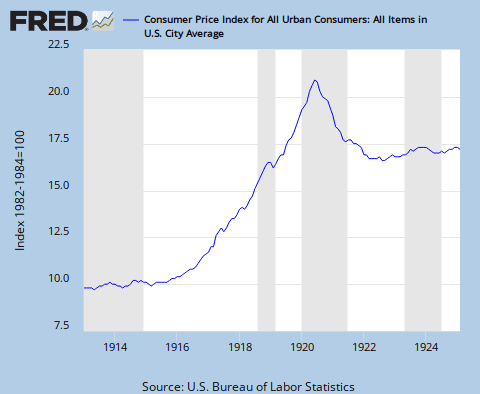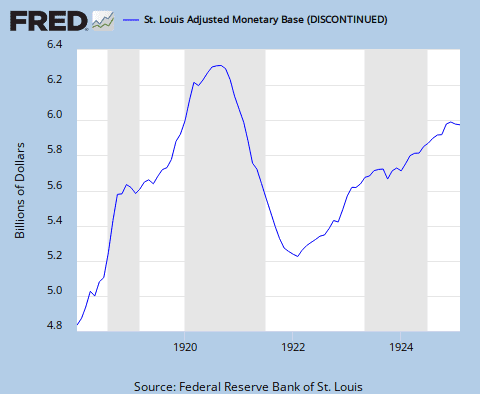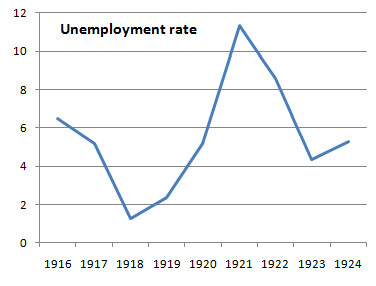Dad2three
Gold Member
\Another FDR-simpleton checks in.
Well....you've come to the right place for your education:
1. In 1931, in some of the darkest days of the Great Depression and the middle of the Hoover administration, unemployment rate stood at 17.4 %. Seven years later, after five years of FDR, and literally hundreds of wildly ambitious new government programs, more than doubling of federal spending, the national unemployment rate stood at 17.4 %. At no point during the 1930s did unemployment go below 14 %. Even in 1941, in the midst of the military buildup, 9.9 % of American workers were unemployed.
2. March 4, 1933, in his first Inaugural Address, FDR said Our greatest primary task is to put people to work.
This meant that the New Deal was a wretched, ill-conceived failure.
3. After the stock market crash,, the Dow hit 250 in 1930 under Hoover (it had been 343 before the crash). January 1940, after seven years of the New Deal, the market had collapsed to 151, and remained in the low 100s through most of FDRs terms.
4. Federal spending went from 2.5 % in 1929 to 9 % in 1936: Washingtons portion of the economy increased by 360 % in just seven years- with no benefit to the economy.
5. Arthur Schlesinger, Jr., liberal New Deal historian wrote in The National Experience, in 1963, Though the policies of the Hundred Days had ended despair, they had not produce recovery He also wrote honestly about the devastating crash of 1937- in the midst of the second New Deal and Roosevelts second term. The collapse in the months after September 1937 was actually more severe than it had been in the first nine months of the depression: national income fell 13 %, payrolls 35 %, durable goods production 50 %, profits 78% .
Lest you embarrass yourself further, take this to heart:
Let the doors be shut upon him, that he may play the
fool no where but in's own house.
― William Shakespeare, Hamlet
So Roosevelt, on the advice of his conservative Treasury Secretary Henry Morgenthau, decided to tackle the country's exploding deficits
Four years into Franklin Roosevelt's first presidential term, the worst of the Great Depression seemed behind him. Massive jolts of New Deal spending had stopped the economic slide, and the unemployment rate was cut from 22 percent to less than 10 percent.

When A Turn Toward Austerity Turned To Disaster : NPR
Did you just refer to Morganthau???
See.....look at how you resist learning.
Well....another dose of same:
No less an authority than FDR's Treasury secretary and close friend, Henry Morganthau, conceded this fact to Congressional Democrats in May 1939:
"We have tried spending money. We are spending more than we have ever spent before and it does not work. And I have just one interest, and if I am wrong ... somebody else can have my job. I want to see this country prosperous. I want to see people get a job. I want to see people get enough to eat.
We have never made good on our promises ... I say after eight years of this Administration we have just as much unemployment as when we started ... And an enormous debt to boot!"*
http://www.businessandmedia.org/articles/2008/20081104085447.aspx
FDR.....failure.
As are you.
[ame=http://www.youtube.com/watch?v=rEQCUgOxShc]BaZing! - YouTube[/ame]
"Did you just refer to Morganthau???"
"... I say after eight years of this Administration we have just as much unemployment as when we started ... And an enormous debt to boot!"
WEIRD:
So Roosevelt, on the advice of his conservative Treasury Secretary Henry Morgenthau, decided to tackle the country's exploding deficits
Four years into Franklin Roosevelt's first presidential term, the worst of the Great Depression seemed behind him. Massive jolts of New Deal spending had stopped the economic slide, and the unemployment rate was cut from 22 percent to less than 10 percent.
THEN HE LISTENED TO THE CONS, SPECIFICALLY MORG...
So Roosevelt, on the advice of his conservative Treasury Secretary Henry Morgenthau, decided to tackle the country's exploding deficits
WHAT HAPPENED?
""All of a sudden," Ritchie says, "after unemployment had been going steadily down, unemployment shot up, the economy stagnated, the stock market crashed again."
When A Turn Toward Austerity Turned To Disaster : NPR








 about)
about)